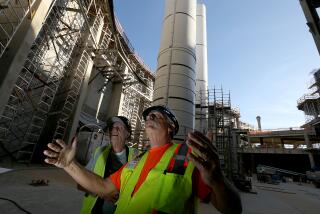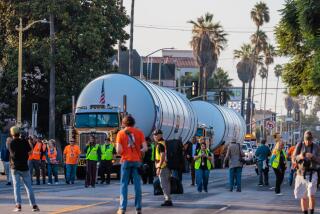Improper Assembly of Booster Theorized
- Share via
Theories that flames emerging from the side of the Challenger’s solid rocket boosters caused Tuesday’s fatal explosion envision a scenario in which a booster seam might have been weakened by improper assembly procedures or by exposure to unusually low temperatures in the night immediately preceding the launch.
The solid rocket boosters are assembled in two basic steps, one of which is carried out at the Bingham, Utah, assembly plant of the booster’s manufacturer, the Thiokol Chemical Corp., a division of Morton Thiokol Corp. The second step is carried out at the Kennedy Space Flight Center.
Each of the 150-foot high boosters starts life as 11 hollow steel cylinders approximately 12 feet in diameter and 13 feet long. At Bingham, they are bolted together to form four segments. A core is placed in the center and the space between the core and the casing is filled with liquefied propellant, which solidifies like Jell-O in a mold. The core is then removed, producing a combustion chamber.
Made in Matched Pairs
The segments are produced in matched pairs, one for each of the two boosters that are used in each mission, so that their thrusts will be as similar as possible. They are then shipped to Kennedy by rail.
At Kennedy, the four segments are bolted together to form the complete rocket, and the outside of the joint is sealed with an epoxy resin. Care is taken to ensure that the faces of the fuel segments are flush when they are joined together, but, significantly, no cement or filler is used to bind them. Only the metal casing is physically joined together.
Concern of Designers
The original designers of the booster were concerned that the fuel segments might be separated by a slight space which would provide a channel that would allow the exhaust to reach the casing and burn through it.
In most cases, such a failure would at the very least provide a sideways thrust that would cause the entire vehicle to behave erratically. A ruptured seam would probably also cause the booster to explode, although it is not clear how long it would take for such an explosion to occur.
In the case of the Challenger, speculation suggests that the seam failed in such a manner that the emerging exhaust was pointed directly at the main fuel tank, with immediate and catastrophic consequences.
More to Read
Sign up for Essential California
The most important California stories and recommendations in your inbox every morning.
You may occasionally receive promotional content from the Los Angeles Times.













